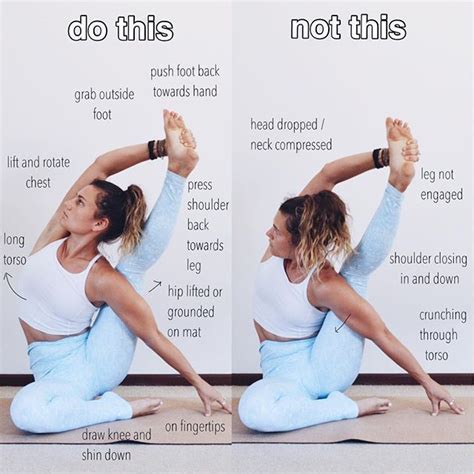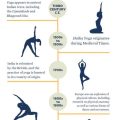The Ultimate Guide to Mastering Yoga Alignment for Optimal Practice
Yoga alignment is one of the foundational elements to achieving a safe, sustainable, and transformative yoga practice. While yoga can be a beautiful combination of breath, movement, and mindfulness, it’s the proper alignment that ensures the poses offer the maximum benefits without risking injury. In this guide, we explore the intricacies of yoga alignment, its importance in your practice, and how to refine it step by step.
Introduction
Yoga, as an ancient practice, has evolved significantly over thousands of years, yet one thing remains constant: the need for correct alignment. Many practitioners, whether new or experienced, focus heavily on flexibility or strength but neglect alignment. However, misalignment can lead to long-term physical issues, whereas proper alignment enhances the body’s mechanics, increases the benefits of poses, and ensures a more effective and safe practice. In this comprehensive guide, we’ll break down the key components of yoga alignment, dive into its historical context, current trends, and provide practical tips for improving your practice.
Key Concepts of Yoga Alignment
Before delving into more complex areas, it’s critical to understand the basic principles that underlie proper alignment in yoga. Yoga alignment involves how your body is positioned in each posture. Here are the fundamental concepts:
- Neutral Spine – Maintaining the natural curves of your spine to avoid excessive rounding or arching.
- Stacking of Joints – Ensuring that joints such as shoulders, hips, and knees are properly aligned to support the body’s weight.
- Engagement of Muscles – Activating the correct muscle groups to maintain stability in a pose.
- Breath Integration – Using the breath to support the alignment and deepen the posture safely.
- Symmetry and Balance – Aiming for evenness in both sides of the body while respecting natural imbalances.
Historical Context of Yoga Alignment
While ancient yoga texts like the Yoga Sutras of Patanjali and Hatha Yoga Pradipika mention posture, alignment wasn’t a primary focus in early yoga. These texts primarily emphasize meditation, breath control, and moral precepts. However, the emergence of modern postural yoga in the early 20th century shifted the focus toward physical practice, and with that came the need for more systematic approaches to alignment.
Influential figures such as T. Krishnamacharya and his students B.K.S. Iyengar and Pattabhi Jois contributed to the development of alignment principles in modern yoga. Iyengar, in particular, emphasized precision and alignment, incorporating props to help students find the correct form. The importance of alignment grew, giving birth to the styles we practice today, such as Ashtanga, Iyengar, and Vinyasa, which all focus on different elements of bodily alignment.
Current State Analysis: Yoga Alignment in Modern Practices
Today, alignment is a key feature in many yoga styles and studios, especially in practices like Iyengar yoga, which is alignment-focused. However, with the rise of more dynamic styles such as Vinyasa Flow or Power Yoga, some practitioners may overlook alignment in favor of fluidity and speed.
This has led to a growing trend of alignment-based workshops and teacher trainings to help both practitioners and instructors improve their understanding of proper form. Despite the variations in approach, the consensus remains: good alignment is crucial for safety, longevity, and deeper progress in your yoga journey.
Practical Applications for Improving Yoga Alignment
Proper alignment isn’t just theoretical; it requires consistent effort and mindfulness in every pose. Here are actionable tips for improving your yoga alignment:
- Use Props – Blocks, straps, and bolsters can support your alignment by providing additional stability and balance.
- Take It Slow – Rushing through poses often leads to misalignment. Slow down to feel how your body is positioned.
- Engage a Teacher – A skilled instructor can offer personalized guidance and adjustments to improve your alignment.
- Listen to Your Body – Pain is a signal that something is off. Never force your body into a position it isn’t ready for.
- Focus on Breath – Let your breath guide your movement and hold, ensuring that your body is aligned and not strained.
Case Studies: Success Stories Through Alignment
| Case Study | Initial Issues | Alignment Strategy | Outcome |
|---|---|---|---|
| John – Office Worker | Back pain and tight shoulders | Focused on aligning the spine and opening the chest with props | Significant pain reduction and increased flexibility |
| Susan – Yoga Beginner | Balance issues in standing poses | Used blocks to adjust foot placement and find stability | Improved balance and confidence in standing postures |
| Maria – Advanced Yogi | Overstretching in forward folds | Engaged core muscles to protect lower back | Better control and less strain during deep stretches |
Stakeholder Analysis: Who Benefits from Proper Yoga Alignment?
Proper alignment benefits various stakeholders within the yoga community, from practitioners to instructors and healthcare professionals:
- Yoga Practitioners – Experience a safer, more effective practice that reduces the risk of injury.
- Instructors – Gain credibility and trust by teaching safe, alignment-based practices.
- Healthcare Providers – Can recommend yoga as a complementary therapy for patients when aligned postures reduce the risk of strain or injury.
- Yoga Therapists – Alignment principles form the basis of therapeutic approaches, especially for rehabilitation and pain management.
Implementation Guidelines: How to Integrate Alignment into Your Practice
To incorporate proper alignment in your yoga practice, follow these step-by-step guidelines:
- Start with Simple Poses – Begin with foundational poses like Mountain Pose (Tadasana) or Downward Dog (Adho Mukha Svanasana) and focus on proper alignment.
- Use Props – Employ blocks, straps, and bolsters to assist in maintaining alignment, especially if you’re new to the practice.
- Work with an Instructor – If possible, attend alignment-based classes or work with a teacher who can provide hands-on adjustments.
- Focus on Form, Not Depth – Rather than pushing into deeper stretches, prioritize the correct form in each posture.
- Consistent Practice – Proper alignment takes time and effort to develop. Practice regularly to build the muscle memory needed for aligned postures.
Ethical Considerations in Teaching and Practicing Yoga Alignment
Ethics in yoga teaching and alignment revolve around bodily autonomy, injury prevention, and inclusivity:
- Respecting Individual Bodies – Every body is different, and what works for one person might not work for another. Teachers must avoid pushing students into positions that aren’t suitable for them.
- Consent and Adjustments – Instructors should always ask for consent before providing hands-on adjustments to avoid discomfort or harm.
- Inclusivity – Yoga should be accessible to all, regardless of physical ability. Alignment-based practices should account for different body types and levels of flexibility.
Limitations and Future Research
While alignment-based yoga practices offer numerous benefits, there are limitations:
- Body Variations – Alignment principles are often based on a “one-size-fits-all” model, but individual body mechanics vary greatly.
- Lack of Scientific Research – Although anecdotal evidence supports alignment-based practices, more scientific research is needed to quantify its benefits and risks.
- Overemphasis on Perfection – In some cases, too much focus on alignment can take away from the mindfulness and meditative aspects of yoga.
Future research may delve into the biomechanics of alignment in yoga and explore ways to personalize alignment practices for different body types and physical conditions.
Expert Commentary
Alignment in yoga is more than just physical positioning; it’s about creating a deeper connection between the mind and body. As yoga continues to grow in popularity, proper alignment will remain a cornerstone of safe and effective practice. While there may be differing opinions on the best methods to achieve proper alignment, the collective goal is to create a balanced, safe, and mindful yoga experience for practitioners of all levels.








